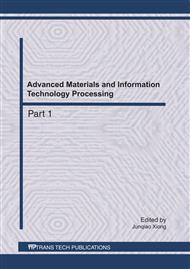p.1086
p.1090
p.1096
p.1103
p.1108
p.1114
p.1120
p.1124
p.1130
Optimal Sensor Placement Based on Particle Swarm Optimization
Abstract:
In order to dispose sensors to reasonable freedom degrees, and reflect adequately the dynamic characteristics of tested structure, the sensor locations of dynamic testing must be optimized. In this paper, taking MAC matrix, Fisher information matrix (FIM), and their combinations as optimization criteria respectively, the particle swarm optimization (PSO) was applied to the optimal sensor location problem (OSLP). The effect of optimization criteria and optimal method to optimal sensor locations were discussed. According to the optimized results, we can arrived at the following conclusions: using MAC and FIM as optimal criteria, introducing the PSO into the OSLP, the optimal sensor locations can ensure the better linear independence of the mode shape vectors and the better estimation of the experimental modal parameters.
Info:
Periodical:
Pages:
1108-1113
Citation:
Online since:
July 2011
Authors:
Price:
Сopyright:
© 2011 Trans Tech Publications Ltd. All Rights Reserved
Share:
Citation:


